While most of us have heard the term 'damp proofing' at some time or another, it's not something we give a lot of thought to most of the time.
Nevertheless, it's an indispensable element of construction that helps to prevent moisture from entering and damaging the building. But what do you know about the subject, and why would you need to know?
DryCore can give you two good reasons: if a damp proof course fails or is inadequate, your home or business premises could be at risk, and without understanding the principles involved, you could fall victim to unscrupulous contractors who will sell you a service you don't need. As well as the financial loss this causes, it can also lead to further damage to your property, resulting in even more expense to put it right!
This blog is designed to arm you with all the information you need to ensure that a) your damp proof course is working properly, b) you know what signs to look out for, c) you know what to do about it, and finally, d) you can protect yourself against scam artists and disreputable damp proofing companies.
So, let's get down to business...
In its simplest term, it's a protective layer added during construction that's designed to stop water ingress. Groundwater soaks into some materials, like brick and certain types of stone, and this can make its way into the property through capillary action, with damp rising up through the porous surface.
A damp proofing membrane or a layer of water-impervious material is inserted between two layers of masonry on the external walls, usually during construction. In the UK, it became mandatory in 1875 to include a damp course during construction work in order to prevent rising damp.
Some houses built before this time have had a damp proof membrane or some other kind of damp proofing added at a later date, but there are still many hundreds of homes that don't have this feature.
In the past, damp proof courses were made from slate or lead, but in modern times it's more likely that asphalt, bitumen, or high-density polyethylene sheeting will be used. Alternatively, engineering bricks are used, and sometimes certain metals, although these are expensive options. Our post "What Is A Damp Proof Course" maybe interest you. You can check it out.
In modern buildings, some sort of damp proofing course will be added to the interior walls and floor to prevent moisture transmission inside.
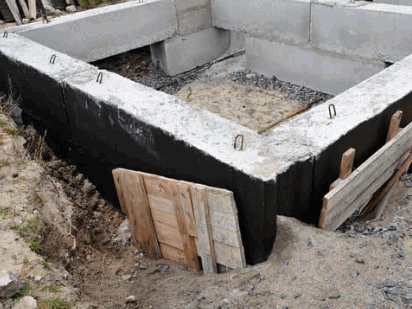
There are several signs to watch out for that will let you know that the physical damp proof course in your property has failed or that it never had one fitted!
This is as unwelcome as it is unsightly, and its spores can contribute to respiratory conditions like asthma. It spreads across the walls, often starting in damp corners where moisture has come through from outside.
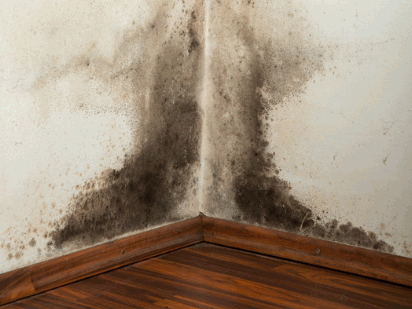
Characteristic 'tide marks' and damp patches appear on the walls, caused by salts leaching through with the moisture. The plaster often needs replacing as hygroscopic salts present will continue to draw moisture from the air, even after the damp treatment is completed.
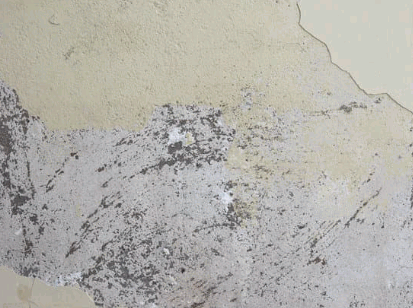
It might take a while to discover this, but you may notice bugs crawling through cracks, like woodlice, centipedes, and silverfish. These are good indicators of damp conditions. It's likely that the wood has rotted where it sits against the wall. Try pressing a thin metal edge (like a screwdriver tip or blade) into the wood and see how easily it goes into the wood.
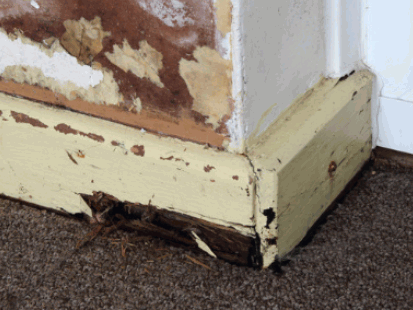
Crumbling or blown plaster can be a sign of excess moisture in your walls. The surface feels chalky and wet and will sound hollow when you tap it.
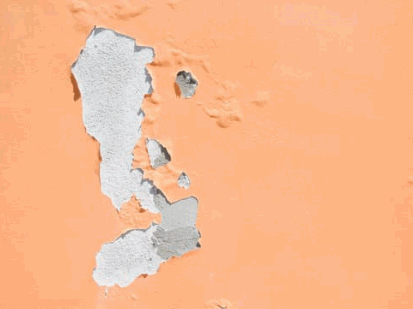
Aside from skirting boards, other wooden fittings can be affected, including structural elements. Once rot takes hold, it can be potentially disastrous and expensive to fix.
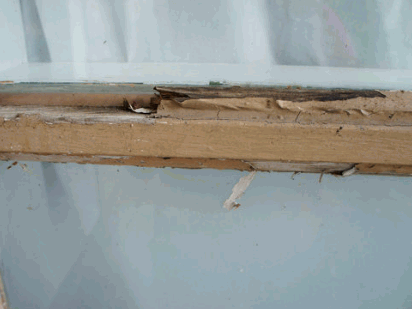
If you find you have a damp wall and your wallpaper is starting to peel, it's possible that rising or penetrating damp is to blame.
A combination of these symptoms suggests that it's possible that you have a serious damp problem that needs addressing.
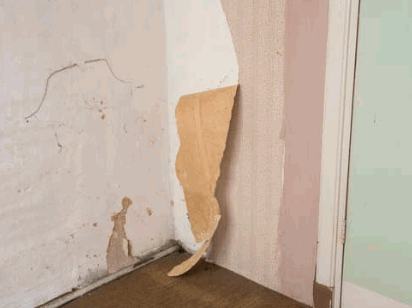
Most are only designed to last for about 25 years and will eventually become ineffective. Also, some were never installed correctly or have been damaged over time.
It should also be that the ground level outside the property has risen, allowing the soil to settle against the outside walls, which lets rainwater soak in above the damp proofing system. You can also check out our post "How To Damp Proof A Wall" for more additional insights.
It is absolutely crucial that you get your property checked out by damp proofing specialists if you suspect that either penetrating damp or rising damp is present.
In thousands of cases, the real problem is condensation caused by things like poor construction methods, leaking roofs, leaking pipes, or lack of adequate ventilation (or a combination of these). A reputable damp proofing company will identify the true cause and help you to resolve it.
Once the problem has been diagnosed, the correct solution can be put in place.
This is the heart of the issue: rising damp problems can be difficult to identify, and using the wrong treatment can cause more damage than it fixes! That's why it's essential to let an expert take a look and advise you. For more learnings, you can check out our post "How Much Does Damp Proofing Cost".
As you know, not all buildings are the same. In the UK, we have houses that were finished yesterday and those that survive medieval times.
Structures that were built in the last hundred years or so will probably have cavity walls - that is, they have a gap between the external and internal walls. Some older buildings with masonry walls only have a single solid layer, and these are prone to damp problems if they're not treated and maintained correctly. These older buildings were designed to allow moisture to evaporate - the materials were breathable, and the houses were draughty, allowing air to flow freely. They also had open fires, which helped to balance the humidity and help with structural dampness.
However, when left empty or maintenance is neglected, these buildings always succumb to rising and penetrating damp.
Newer structures with cavity walls are built with fewer gaps using modern techniques. While they're largely protected against damp problems (because most already have damp proof membranes or layers of some kind), these can fail, as we mentioned earlier.
When treating a building for damp problems and fitting a damp proof course (DPC), we always take the age of the building into account and act accordingly, as applying an incorrect method could cause considerable damage.
There are several damp proofing methods depending on the problem, as there are several different types of damp. Here are a few that are commonly used in the UK:
A series of holes are drilled in the mortar course just above your existing damp proof course and a chemical DPC layer is injected directly into your walls in the form of damp proofing cream, silicone gel, or special rods with water-repelling qualities. This stops unwanted moisture from rising above a certain level.
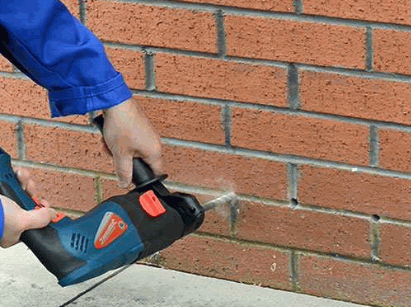
This method is useful for very thick or rubble-filled walls: a copper cathode is inserted through the walls and buried at ground level, generating an osmotic flow that repels water.
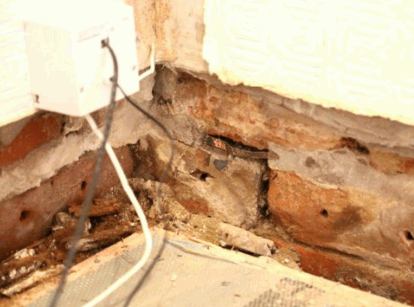
Water-resistant compounds are added to the concrete mix, which is used for damp proofing walls during construction rather than as a remedial DPC method.
You will come across articles online by people claiming that rising damp doesn't exist.
And it's easy to be swayed by their enthusiasm, as well as their status - many of these claims are made by professionals (usually in the heritage building renovation and restoration trade).
However, their argument is mostly based on an experiment where a pillar of bricks was put in a tub of water. For rising damp to occur, the water would need to soak into the bricks and rise upwards via capillary action.
Apparently, this didn't happen, leading them to conclude that rising damp is a complete fabrication. However, all this shows is that the experiment failed to reproduce the phenomenon in laboratory conditions. On top of this, some contractors say, "I've never seen it, so it can't exist!" and others insist that old buildings never got damp even though they didn't have damp proofing, which is, of course, complete nonsense.
Alternatively, we need to take into account the many thousands of qualified workers with decades of experience who witness the destruction and damage caused by rising damp (and penetrating damp) every year, including the dedicated and highly-professional team at DryCore.
Furthermore, you only need to look at world-famous water-logged sites like Venice to see that rising damp is a serious problem. Even so, there are those who insist it doesn't exist there! If this is the case, someone needs to enlighten the Italian government, which has spent millions of Euros every year trying to fix the problem. And finally, you'll hear the astonishing claim that 'they don't have damp proofing in the Netherlands', despite the fact that they most assuredly do (you can find adverts online for rising damp specialists in places like Rotterdam, Utrecht, and Eindhoven).
One factor that doesn't help is that it is often confused with penetrating damp, and misdiagnosed entirely when it might be an issue with condensation, leading to unnecessary work.
However, this phenomenon is very real, and it causes untold damage to thousands of buildings across the UK every year, usually because it has been ignored and left untreated for years.
So, yes, rising damp does exist, despite strenuous - and often ludicrous - arguments to the contrary.
Damp affects millions of homes and businesses each and every day, and a sound, sensible, and achievable damp proofing system should be available to everyone who wants it.
Don't risk your home or business by ignoring the issue or listening to those who claim it doesn't exist - it's not their home that's at risk!
However, at DryCore we understand that it's right to be cautious, so when you need a reputable damp proofing expert, seek advice from the Property Care Association, who will find a company you can trust to identify and fix the problem for you.